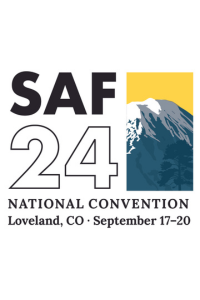Taking a New Look at Diversification of the U.S. Forest Service Workforce
Thursday, September 19, 2024
3:00 PM - 3:30 PM MST
Location: Innovation Zone Room 1
CE: 0.5
Sponsored By USDA Forest Service

Laura S. Kenefic, PhD (she/her/hers)
Supervisory Research Forester
U.S. Forest Service
Orono, Maine, United States- MD
Michael J. Dockry, PhD (he/him/his)
Assistant Professor
University of Minnesota
Saint Paul, Minnesota, United States
Co-Presenter(s)
As the largest natural resource employer, the U.S. Forest Service influences workforce demographics of the sector as a whole. Though the agency has prioritized employee diversification, inequalities in representation, retention, and advancement persist. This talk will review new longitudinal, intersectional, and spatial analyses that highlight opportunities for improving employee diversity, equity, and inclusion in natural resource fields.
Learning Objectives:
- Describe the goals of the U.S. Forest Service with regard to workforce diversification and whether or not the agency has achieved them.
- Identify barriers to achieving a diverse and equitable U.S. Forest Service workforce during the hiring, retention, promotion, and separation stages of employment.
- List ways the U.S. Forest Service has made progress toward workforce diversification and describe opportunities for further improvements.

